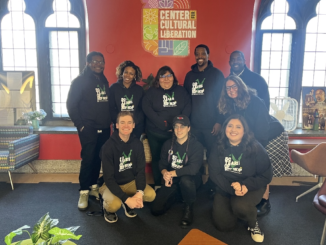
By: Bianca Dinkha
After a three-year student loan pause concluded in early October, repayments are due once again.
This has raised concerns for Dominican students and alumni, who were anticipating debt relief instead.
Adding to the complications, the Biden administration announced an additional $9 billion increasing $127 billion in relief earlier this month. The Education Department distributes the funds to various debt relief programs.
President Biden’s original debt relief proposal provided up to $20,000 in relief for debtors earning less than $125,000 if they had been awarded a Pell Grant.
The plan was blocked by the Supreme Court, which barred millions from receiving loan forgiveness.
Instead, Biden is taking a piecemeal approach with existing programs.
Tina Baskin, executive director of financial aid and enrollment services, said the latest funds are now added to pre-existing programs for borrowers who applied and met the criteria.
“It is money that is being added to the pot that they already have,” she said. “The PSLF (Public Service Loan Forgiveness) and the income driven repayment plans already exist. It is adding money to those buckets.”
There are specific qualifications to be considered for loan forgiveness, which may vary depending on the field of work.
This includes teachers, medical professionals, and government employees. Debtors may also qualify if they work for a non-profit, are on an income-driven repayment plan, or have a disability.
Additionally, most borrowers are eligible for Public Service Loan Forgiveness, which requires 120 repayments over 10 consecutive years.
“When we are talking about PSLF, it means that all of these people are qualified for the program and it made 10 years of payments,” said Baskin. “This is happening, but it is not just because you applied and have loans.”
“I think that is important to stress about,” she added. “You have a part that you need to do for basically 10 years before you can get it approved.”
This has generated anxiety among Dominican students and alumni who thought they would receive immediate assistance with debt relief.
Senior Alan Rodriguez criticized universities for failing to provide loan information to students.
“No one really teaches you about loans,” he said. “I know there is the mandatory counseling that the federal loans ask you to do on their webpage, but realistically it is just an infographic. What do infographics really do for you?”
Rodriguez went on to emphasize that when it comes to financial literacy and loans, students must do their own research. Otherwise, there is no outreach from universities.
Mariana Garcia, assistant director of annual giving, voiced concern over the resumption of loan repayments.
“Everybody had hope that there was going to be loan forgiveness,” Garcia said. “Personally, I was really hoping because it is not easy to graduate and go into the real world. It is not easy to prepare unless you ask for help or look for the resources you need.”
According to the federal government’s College Scorecard, 65% of students at Dominican receive federal loans and graduate with an average debt load of $24,411. While 10% of borrowers have paid their debt in full 2 years after entering repayment, 30% have made no progress.
For more information on loans and repayment plans, students and recent graduates may visit studentaid.gov to see how they can qualify for loan forgiveness.
Bdinkha@my.dom.edu



